Best Australian eCommerce Platforms & Marketplaces for 2025
31 Jan 2025
|by diadmin

eCommerce Platforms
Running an eCommerce platform business often feels like juggling numerous tasks simultaneously. From managing product listings and addressing customer inquiries to processing payments and shipping orders, there’s a lot to navigate. The platform you select to operate your store can be either your greatest ally or a source of constant frustration. If your platform is difficult to navigate, doesn’t integrate seamlessly with other tools, or fails to keep pace with your growth, it’s akin to driving a sports car on flat tires—frustrating, isn’t it?
Choosing the wrong platform can result in lost sales, stunted growth, and unnecessary stress. But here’s the upside: finding the best ecommerce platforms or marketplace can be transformative. It can streamline your operations, simplify scaling, and help you reach a broader audience, all without the headaches.
In this article, you’ll explore the top 7 eCommerce platforms ideal for Australian businesses, along with a bonus list of 5 leading marketplaces to expand your reach. We’ll delve into key features, the pros and cons, and identify the types of businesses best suited for each platform or marketplace. By the end, you’ll gain valuable insights that will assist you in selecting the right tools to simplify operations, scale efficiently, and grow your online store.
What are eCommerce Platforms?
An eCommerce platform is a comprehensive software solution that empowers businesses to create and manage their online stores. These e-commerce platforms provide a suite of tools and features designed to facilitate online sales, including website design, payment processing, inventory management, and customer relationship management (CRM). A robust eCommerce platform should be scalable to accommodate business growth, secure to protect sensitive data, and user-friendly to ensure a smooth experience for both the business owner and the customer. With a wide range of customization options, businesses can tailor their online stores to reflect their brand identity and meet specific operational needs.
How to Choose the Right eCommerce Platform for Small Businesses
When selecting an eCommerce platform, small business owners should consider these essential factors:
- Business Size & Growth Potential: Choose a platform that aligns with your current business size and can scale as you expand. Small startups benefit from simplicity, while larger enterprises require scalability.
- Ease of Use: Select a platform that matches your team’s technical expertise. Drag-and-drop options are ideal for non-technical users, whereas more complex platforms provide flexibility for tech-savvy teams.
- Customization & Flexibility: Determine the level of control you need over design and functionality. Some platforms offer extensive customization, while others focus on ease of setup over flexibility.
- Scalability: Opt for a platform capable of growing with your business, accommodating more products, increased traffic, and new sales channels as you expand.
- Support & Resources: Ensure the platform provides robust customer support, particularly during setup and troubleshooting. Look for options with 24/7 support or comprehensive knowledge bases.
- Local Payment & Shipping Integration: Verify that the platform integrates with Australian payment gateways (e.g., Afterpay) and shipping providers (e.g., Australia Post) to streamline operations.
Selecting a platform that aligns with the specific needs of your business model is crucial for achieving business goals and successfully managing sales operations.
This concise guide helps you concentrate on the essentials when selecting a platform that meets your needs and future growth ambitions.
Top 5 eCommerce Platforms for Australian Businesses
Selecting the right e-commerce platform is crucial for setting your business on a path to long-term success. Here’s an overview of the leading eCommerce platforms tailored for Australian businesses, evaluated based on their features, scalability, and user-friendliness.
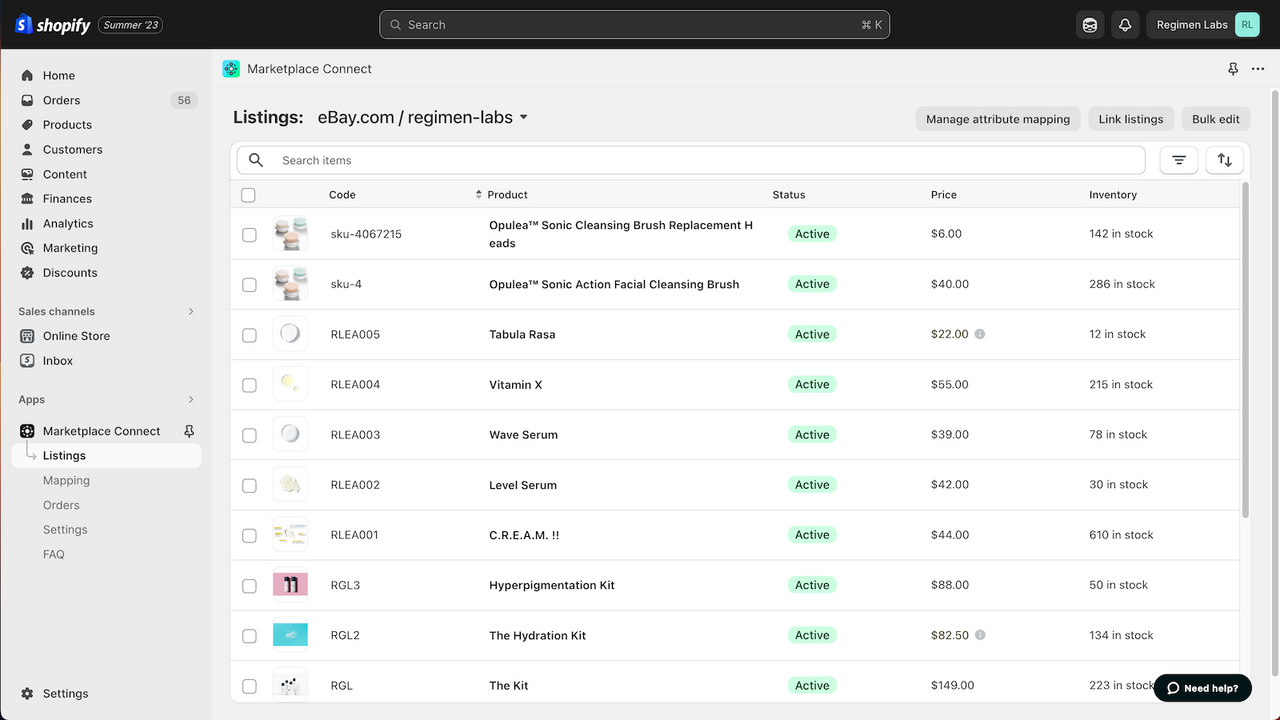
1. Shopify
Overview: As one of the world’s most popular eCommerce platforms, Shopify is a top choice for Australian businesses. It offers simplicity, flexibility, and scalability, making it suitable for enterprises of all sizes. Shopify provides tools to build and manage an online store with minimal technical knowledge. Additionally, Shopify supports the growth and scalability of an online business by offering various e-commerce tools and services to enhance customer engagement and operational efficiency.
Key Features:
- Integrated payment options supporting AUD, including Shopify Payments, Afterpay, and PayPal.
- Access to over 6,000 apps to enhance store functionality, from marketing tools to shipping integrations.
- Scalability with plans ranging from Shopify Basic for
2. BigCommerce
Overview: BigCommerce is an ideal platform for rapidly expanding Australian businesses. Renowned for its scalability and robust features, it offers more built-in functionality than many competitors, reducing dependency on additional apps.
Key Features:
- No transaction fees on any plan.
- Multi-channel selling capabilities, integrating with Amazon, eBay, and social platforms.
- Supports multi-currency payments, including AUD.
- Advanced SEO tools and a robust API for deeper customization.
Pros:
- Highly scalable with strong native features.
- Minimal reliance on third-party apps.
- Excellent for managing large catalogs and high sales volumes.
Cons:
- Steeper learning curve compared to Shopify.
- Premium themes and features can be costly.
Best For: Mid to large-sized businesses or enterprises requiring scalability and built-in features to handle complex catalogs and high sales volumes.
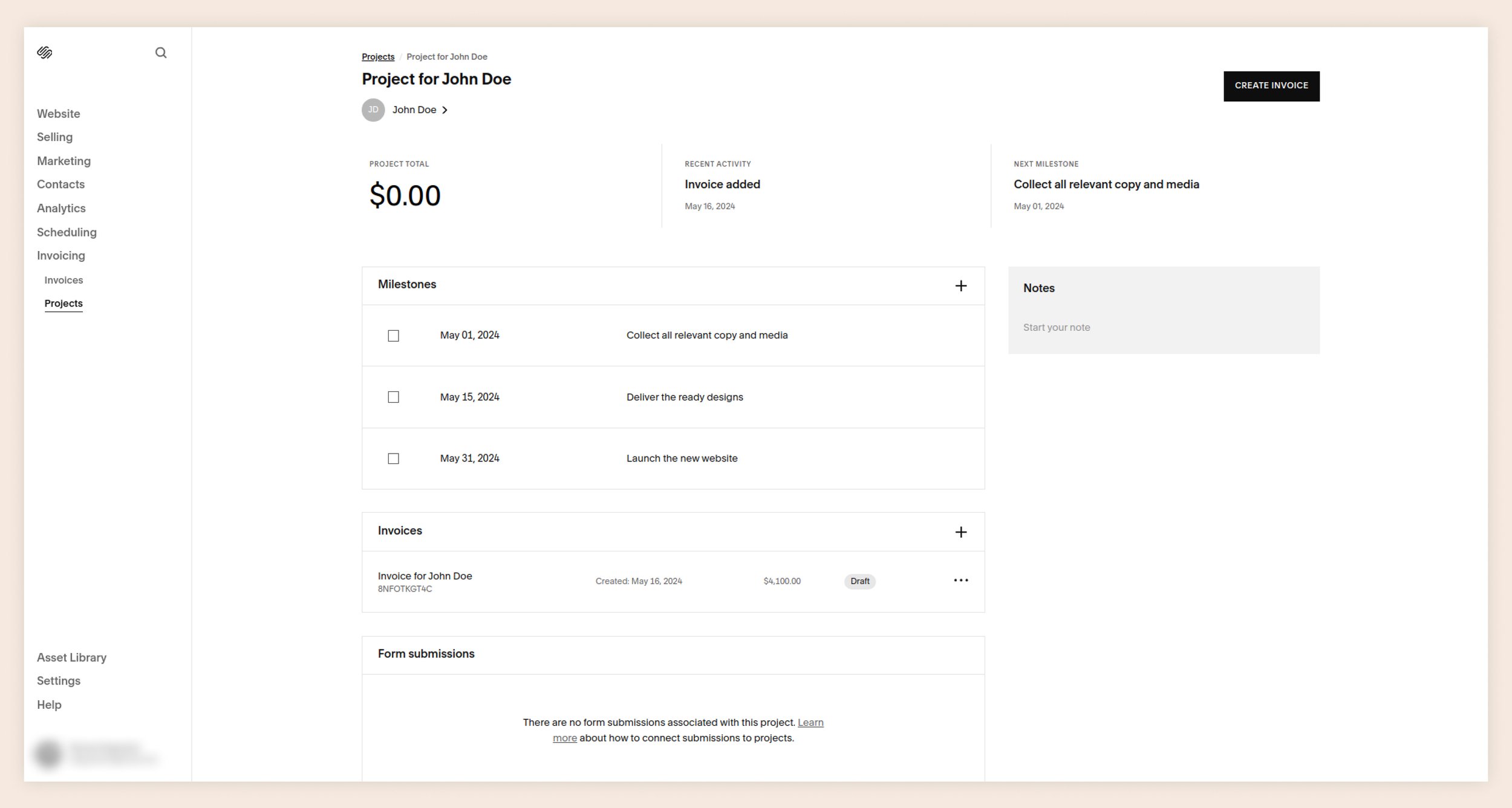
3. Squarespace
Overview: Squarespace is renowned for its elegantly designed templates and ease of use, making it an ideal option for small Australian businesses focused on branding. While primarily a website builder, its eCommerce capabilities shine for entrepreneurs aiming to display products in a visually captivating manner.
Key Features:
- Designer templates that require minimal customization to appear professional.
- Integrated payment gateways such as Stripe and PayPal, with Afterpay available through plugins.
- Built-in marketing tools, including email campaigns and SEO optimization.
- Inventory management and a mobile app for managing your store on the go.
Pros:
- Stunning, customizable templates with minimal effort.
- User-friendly for beginners with a drag-and-drop interface.
- Integrated email marketing and analytics tools.
Cons:
- Limited features for advanced eCommerce needs.
- Fewer integrations compared to platforms like Shopify or BigCommerce.
Best For: Creative businesses, artists, and designers seeking a straightforward platform with exceptional design capabilities.
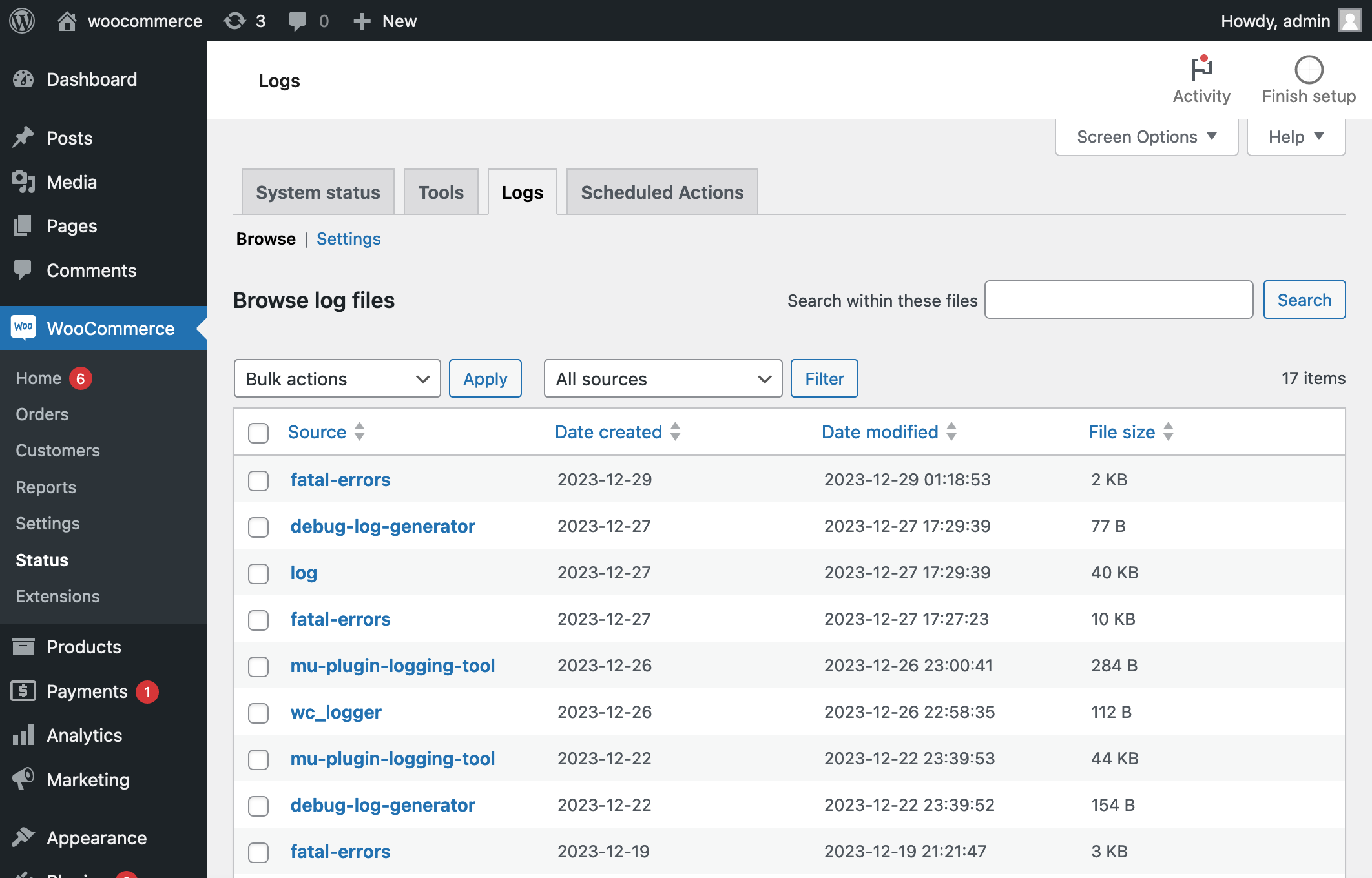
4. WooCommerce (for WordPress users)
Overview: WooCommerce is an open-source plugin for WordPress that transforms your website into a fully functional online store. It’s a versatile solution ideal for those who desire complete control over their eCommerce site and have the technical expertise or a developer for customizations.
Key Features:
- Highly customizable, allowing full control over design, functionality, and integrations.
- Free to use, though hosting, themes, and plugins incur costs.
- Supports a wide range of payment gateways, including Stripe, Afterpay, and PayPal, with multi-currency options.
- Strong SEO capabilities, leveraging the robust features of WordPress to improve visibility in search engines.
Pros:
- Total flexibility and control over your store.
- Wide array of plugins and themes to enhance functionality.
- Low cost for basic setups, with free and premium add-ons.
Cons:
- Requires more technical expertise than hosted platforms like Shopify.
- Costs can accumulate with hosting, premium plugins, and maintenance.
Best For: Businesses already utilizing WordPress or those with the technical acumen to fully customize their eCommerce store.
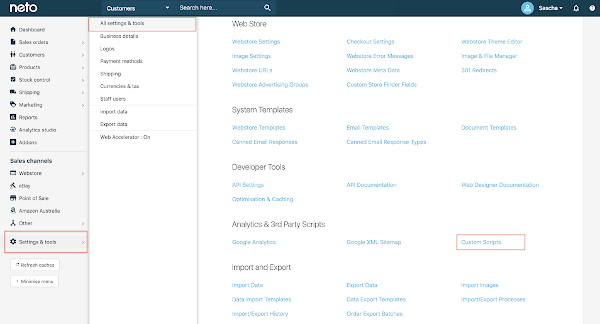
5. Neto (Maropost Commerce Cloud)
Overview: Neto, now rebranded as Maropost Commerce Cloud, is an Australian platform offering a comprehensive solution for businesses needing robust inventory and order management systems. It’s ideal for both B2B and B2C companies and integrates seamlessly with Australian services like Australia Post.
Key Features:
- Multi-channel selling, integrating with eBay, Amazon, and Google Shopping.
- Australian payment gateways such as Afterpay, POLi, and Zip Pay.
- Built-in POS system for seamless in-store and online sales management.
- Advanced inventory management for businesses handling large inventories and complex logistics.
Pros:
- Tailored to the Australian market with local integrations.
- Strong multi-channel selling and inventory management features.
- Perfect for businesses requiring both B2B and B2C functionalities.
Cons:
- Limited customization compared to open-source platforms like WooCommerce.
- Fewer third-party integrations than Shopify or BigCommerce.
Best For: Australian businesses that need sophisticated inventory and order management with local support and seamless integration with Australian services.
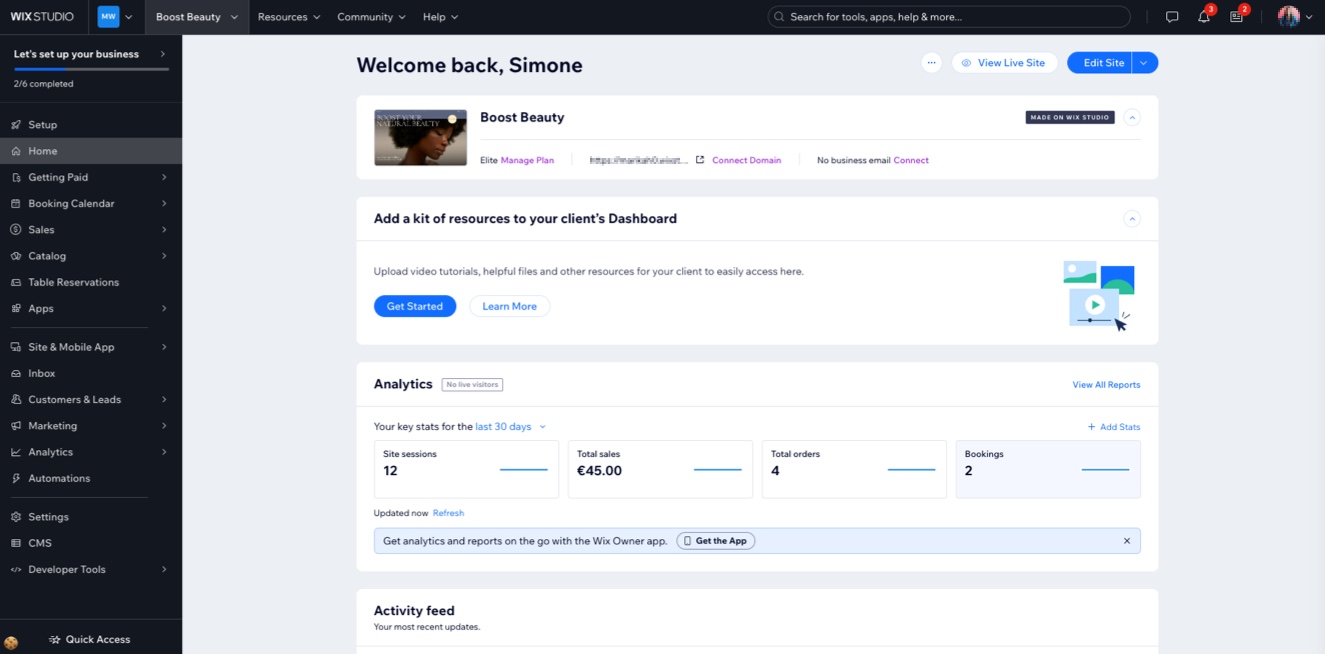
6. Wix eCommerce
Overview: Wix provides a user-friendly website builder with built-in eCommerce features, making it ideal for small businesses and hobbyists. It suits those seeking a quick setup with stunning design options.
Key Features:
- Drag-and-drop builder with a vast template library.
- Supports AUD payments via Stripe and PayPal.
- Includes integrated SEO tools and marketing features.
Pros:
- Exceptionally beginner-friendly.
- Cost-effective with comprehensive plans.
- Offers mobile optimization and built-in SEO.
Cons:
- Limited scalability for larger enterprises.
- Fewer advanced eCommerce tools compared to platforms like Shopify or BigCommerce.
Best For: Small businesses, freelancers, and hobbyists desiring an easy setup and attractive design.
7. Shopline
Overview: Originating in Asia, Shopline is gaining traction in Australia, especially for businesses aiming to expand internationally. It offers an easy setup and a broad range of localization options for global commerce.
Key Features:
- Multi-language and multi-currency support for global sales.
- Customizable themes and marketing tools.
- Features integrated payment gateways like Stripe, PayPal, and regional options.
Pros:
- Strong emphasis on cross-border selling.
- Intuitive with customizable options.
- Excellent for expanding into Asian markets.
Cons:
- Less recognized compared to other platforms.
- Fewer available integrations and apps.
Best For: Australian businesses seeking international expansion, particularly into Asian markets.
By understanding each platform’s strengths and weaknesses, you can select the one that best aligns with your business needs and growth objectives. Whether you’re seeking ease of use, scalability, or advanced features, there’s a solution for every stage of your eCommerce journey.

Understanding the Full Cost of eCommerce Platforms: Pricing, Customization, and Key Considerations
When you’re picking an eCommerce platform, it’s tempting to just look at the price tag, but there’s a lot more to it than just the monthly fee. You’ve got to think about hidden transaction charges, setup fees, and customization costs to really see the full picture. It’s like building a house—the upfront cost is just one part. You’ve also got to think about maintenance, upgrades, and scalability as your business grows.
In this section, we’ll break down the main elements that make up the total cost of ownership for an eCommerce platform, so you can avoid surprises and make a choice that fits your budget and long-term goals. We’ll dive into pricing models, customization options, and other key things to consider, helping you pick the platform that gives you the best bang for your buck.
Ecommerce Platform Pricing Comparison
Choosing the right eCommerce platforms isn’t just about the lowest price—it’s about understanding the total cost of ownership. Here’s a breakdown of what to consider:
- Pricing Models: Most platforms charge a monthly fee plus transaction fees. Always check for hidden costs like setup fees or extra charges for third-party integrations, as they can add up quickly for high-volume businesses.
- Total Cost of Ownership: Consider setup costs, monthly fees, and transaction fees. As your business scales, additional costs like bandwidth or advanced features could increase your expenses.
- Hidden Fees: Be aware of extra costs, such as charges for additional bandwidth, premium analytics, or integrations with third-party apps.
Customization, Integrations, and Inventory Management
When selecting a platform, customization and integration capabilities are key to building a store that aligns with your needs.
- Customization: Look for platforms that offer templates, themes, and flexibility to customize your store’s design and features. Platforms like WooCommerce and BigCommerce excel in customization.
- Integrations: Ensure your platform integrates with essential tools like payment gateways, shipping providers, and marketing apps. Shopify offers a broad app marketplace with hundreds of third-party integrations.
- API Access: For businesses with unique needs, API access is important for creating custom integrations and adding specific functionalities.
Payment Processing and Security
Payment processing and security are critical for protecting your business and customers.
- Payment Gateways: A platform should support a variety of payment options, such as credit cards, PayPal, and bank transfers.
- Security Features: Look for SSL encryption, two-factor authentication, and PCI compliance to safeguard your customer data. Ensure a smooth, secure checkout experience to reduce fraud risks.
Mobile Responsiveness and SEO
In today’s mobile-first world, mobile responsiveness and SEO are essential to driving traffic and ensuring a great user experience.
- Mobile-Friendly Design: Choose platforms with responsive design templates that work seamlessly across all devices, from desktop to mobile.
- Search Engine Optimization (SEO): Built-in SEO tools like customizable meta tags and SEO-friendly URLs are crucial for driving traffic to your store. Additionally, tracking tools help you optimize performance.
Customer Support and Resources
Good customer support can make or break your experience with a platform.
- Support Channels: Look for 24/7 access via phone, email, or live chat to ensure timely support when needed.
- Knowledge Base: A comprehensive knowledge base with tutorials, FAQs, and guides can help you troubleshoot and learn independently.
- Community Forum: Engaged community forums allow for peer support and knowledge-sharing.
B2B eCommerce Platforms
For businesses that cater to other businesses, B2B platforms offer specific tools like volume pricing, custom catalogs, and purchase order management. Ensure the platform integrates with systems like ERP and CRM for seamless data flow.
Dropshipping and Marketplace Integration
If you’re interested in dropshipping or selling through marketplaces, choose platforms that integrate with popular services like Oberlo, AliExpress, and Amazon. These integrations simplify order fulfillment and expand your reach without holding inventory.
By considering these factors, you’ll find a platform that meets your needs while supporting your business’s growth.
Setting Up Your Online Store
Setting up an online store can seem overwhelming, but with the right eCommerce platform, it becomes a manageable and even enjoyable process. Here are the essential steps to get your online store up and running smoothly:
- Choose the Right eCommerce Platform: The foundation of your online store is the eCommerce platform you select. Consider factors such as scalability, security, and customer support. Platforms like Shopify, BigCommerce, and WooCommerce offer robust features tailored to different business needs, from small businesses to large enterprises.
- Register Your Domain Name: Your domain name is your store’s address on the web. Choose a name that is easy to remember, reflects your brand, and is relevant to your business. Many eCommerce platforms offer domain registration services, making it convenient to secure your desired name.
- Set Up Your Payment Gateway: A payment gateway is crucial for processing online payments securely. Popular options include PayPal, Stripe, and Square. Ensure your chosen platform supports these gateways and integrates them seamlessly into your store.
- Add Products to Your Store: Populate your store with high-quality product images and detailed descriptions. This not only enhances the shopping experience but also helps with search engine optimisation (SEO). Organize your products into categories to make navigation easy for your customers.
- Configure Shipping Options: Shipping is a critical aspect of eCommerce. Configure your shipping options to ensure timely delivery. Consider offering multiple shipping methods, such as standard, express, and international shipping, to cater to different customer needs.
- Test Your Store: Before launching, thoroughly test your online store. Check for any bugs or errors, ensure all links work, and verify that the checkout process is smooth. Testing helps you identify and fix issues, providing a seamless experience for your customers.
By following these steps, you can set up a professional and efficient online store that meets your business needs and provides a great shopping experience for your customers.
Top 5 Australian Marketplaces of 2024 [Bonus Content]
When expanding your eCommerce business, utilizing marketplaces can significantly boost your sales and visibility. Australian marketplaces offer direct access to a large pool of buyers and come with built-in traffic and trust. Here’s a breakdown of the top 5 marketplaces for Australian sellers:
1. Amazon Australia
Overview:
As the largest eCommerce platform globally, Amazon has a strong and growing presence in Australia. Sellers benefit from Amazon’s massive customer base and trust, making it an ideal marketplace for scaling quickly.
Key Features:
- Fulfillment by Amazon (FBA): Leverage Amazon’s robust logistics network for storing, packing, and shipping.
- Large audience reach: Millions of active Australian shoppers.
- Multi-channel selling: Manage listings across Amazon and other platforms like eBay.
Best For:
Sellers aiming to scale quickly and those who want to outsource fulfillment.
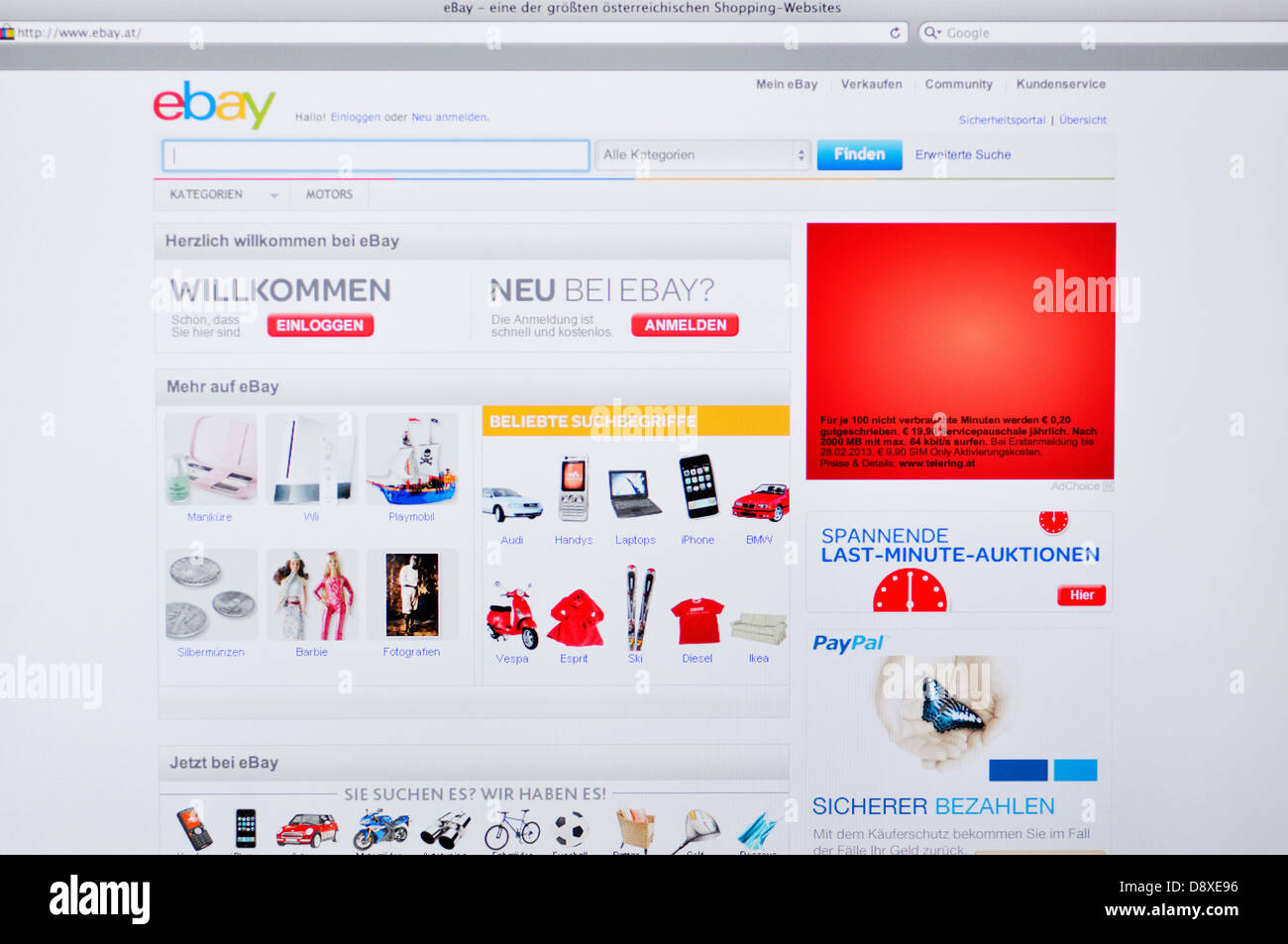
2. eBay Australia
Overview:
eBay eCommerce platform is one of the most established and trusted marketplaces in Australia. Its large user base and flexible selling options make it an excellent platform for businesses of all sizes.
Key Features:
- Flexible selling formats: Choose between auctions or fixed-price listings.
- Local and global reach: Sell domestically or access international buyers.
- Strong tools for promotions and analytics: Easily run discounts and monitor performance.
Best For:
Sellers who want flexibility in pricing and international selling options.

3. Catch
Overview:
Catch is one of Australia’s leading marketplaces, known for offering great deals on a wide range of products. It’s perfect for sellers looking to move inventory quickly through discounts and promotions.
Key Features:
- Daily deals and promotions: A platform that thrives on discounted pricing.
- Loyal Australian customer base: Trusted by shoppers for bargains.
- Fulfillment by Catch (FBC): Available for sellers to streamline shipping.
Best For:
Sellers looking to offer competitive pricing or clear inventory.
4. MyDeal
Overview:
MyDeal is a growing marketplace in Australia, primarily focused on home, lifestyle, and furniture products. It offers a user-friendly platform for sellers and a high-traffic site for buyers in these categories.
Key Features:
- Targeted audience: Ideal for businesses in the home and lifestyle sector.
- Easy seller onboarding: Simple setup process for new sellers.
- Marketing support: Leverage MyDeal’s promotional tools to boost visibility.
Best For:
Home and lifestyle product sellers who want to reach a targeted audience.
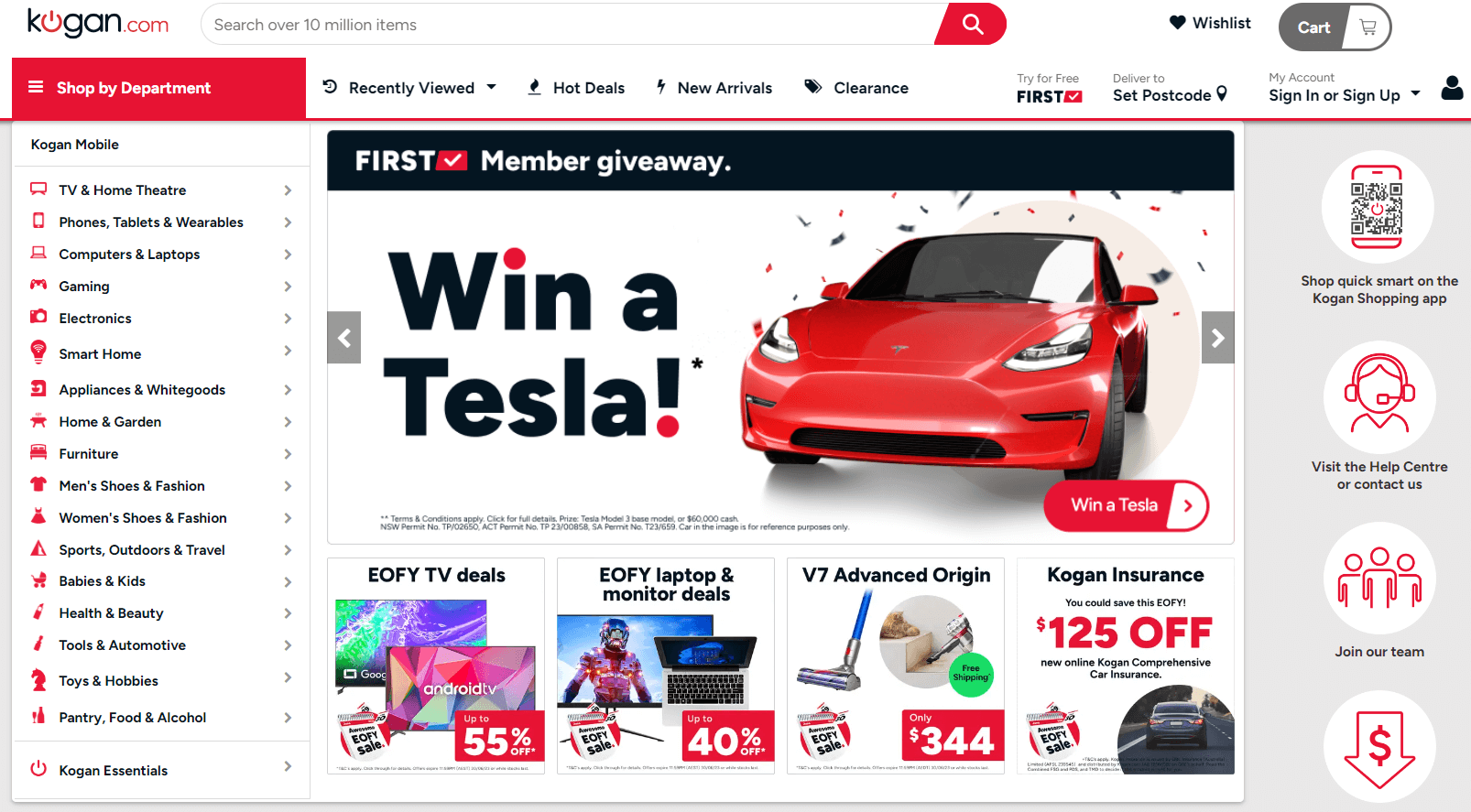
5. Kogan Marketplace
Overview:
Kogan is one of Australia’s leading online retailers, and its marketplace offers sellers access to millions of active shoppers each month. Originally known for selling electronics, Kogan has expanded its offerings to cover a wide range of categories, including home goods, health and beauty, and baby products. Kogan’s strong local presence and trust make it a great option for Australian businesses looking to expand their reach.
Key Features:
- Wide product range: Sellers can list items across numerous categories, from electronics to home and garden.
- Marketing support: Kogan provides promotional opportunities through email campaigns and major sales events like Kogan Frenzy.
- Commission-based model: Sellers pay a commission on sales, negotiated during registration, plus a small payment processing fee (20¢ + 1.39%).
Best For:
Australian sellers looking to tap into a large, local audience with the potential for high visibility and marketing support.
Next Steps: Taking Control of Your Order Fulfilment
Once you’ve selected the right eCommerce platform for your business, the next critical step is managing your orders efficiently. To streamline the fulfillment process, you need a simple, easy-to-use solution that keeps everything organized—especially if you’re selling across multiple platforms.
ShipMarvel is the perfect tool to do just that. ShipMarvel is a FREE order management software designed to help eCommerce businesses track, process, and fulfill orders across multiple platforms like Shopify, BigCommerce, Kogan, and more—all from one centralized dashboard.
Here’s how ShipMarvel makes order management effortless:
- Automated Syncing: All your orders from different platforms are pulled into one dashboard, so you don’t have to switch between sites.
- Simplified Fulfillment: Manage shipping, delivery, and tracking information from a single interface, cutting down on errors and saving time.
- Fast Setup: ShipMarvel is incredibly easy to set up, so you can start managing your orders right away without the hassle.
For businesses looking to fast-track their order management and streamline fulfillment processes, ShipMarvel is the ideal solution. And the best part? You can sign up for free and start using it today.
Get started with ShipMarvel and simplify your order management—Sign up for FREE here!
Conclusion
Choosing the right eCommerce platform is a pivotal decision for the success of your online business. With a plethora of options available, it’s crucial to conduct thorough research and select a platform that aligns with your business model and growth aspirations. Consider factors such as scalability, security, and customer support, and don’t hesitate to seek assistance if needed.
By following the steps outlined in this article, you can set up a successful online store and start selling products to customers worldwide. Remember, the best eCommerce platform is the one that best fits your unique business needs. Experiment with different platforms to find the perfect match, and stay updated with the latest eCommerce trends and best practices.
By choosing the right eCommerce platform and setting up your online store correctly, you can significantly boost your online sales and grow your business. So why wait? Start building your online store today and take your business to the next level.